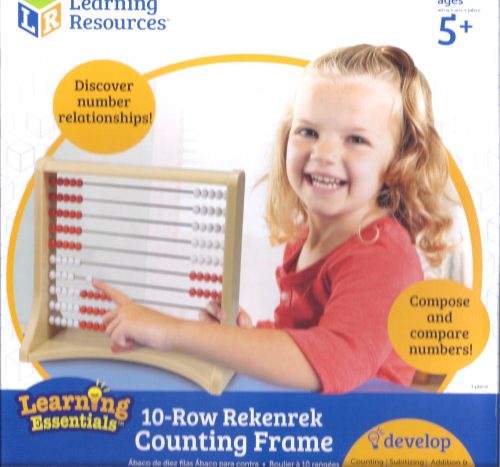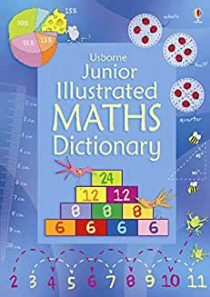
 The beads and frame on this sturdy abacus are made of plastic. The dimensions are 23cm L, 22cm H and 10cm wide. The red and white beads allow children to make mental images of numbers for counting, composing, and decomposing numbers, adding and subtracting, and visualising through 100 using groups of five and ten as anchors and reference points.
The beads and frame on this sturdy abacus are made of plastic. The dimensions are 23cm L, 22cm H and 10cm wide. The red and white beads allow children to make mental images of numbers for counting, composing, and decomposing numbers, adding and subtracting, and visualising through 100 using groups of five and ten as anchors and reference points. Tony Brown and Henry Liebling have written a book for all those who want children to enjoy the challenge of learning mathematics. They presents teachers, students and home educators with exciting and varied ideas for introducing mathematics to primary-age children. They suggest ways to use equipment and resources to support learning.
Tony Brown and Henry Liebling have written a book for all those who want children to enjoy the challenge of learning mathematics. They presents teachers, students and home educators with exciting and varied ideas for introducing mathematics to primary-age children. They suggest ways to use equipment and resources to support learning.
 This is a double sided dry- wipe time- line. On one side the line is analogue and shows clocks configured with the times 1'o clock to 12 o'clock twice. Midday is denoted by a sun and midnight by a moon.The other digital side presents the 24 hour digital clock. It is useful for pupils to see the time-line equivalents but also to use either side to calculate elapsed time
This is a double sided dry- wipe time- line. On one side the line is analogue and shows clocks configured with the times 1'o clock to 12 o'clock twice. Midday is denoted by a sun and midnight by a moon.The other digital side presents the 24 hour digital clock. It is useful for pupils to see the time-line equivalents but also to use either side to calculate elapsed time
 This game focuses on the tables 2 - 9. It can be played by a group of children working on a particular table, but only has enough boards for two working on the same table. Additional sets of boards can be purchased for 1.50. Each table is practised at two levels of mastery - initially in number order 1x, 2x, 3x, etc. then randomly.
This game focuses on the tables 2 - 9. It can be played by a group of children working on a particular table, but only has enough boards for two working on the same table. Additional sets of boards can be purchased for 1.50. Each table is practised at two levels of mastery - initially in number order 1x, 2x, 3x, etc. then randomly.
 This is a fun resource for developing appreciation of number bonds up to 10. The tree is shaken and ten apples are split into two collecting tubes marked with a scale of 1 to 10. The front of the tree only displays the content of one tube and the learner is invited to work out how many apples are in the hidden tube behind the tree. Apples can be removed so that other number bonds can be practised.
This is a fun resource for developing appreciation of number bonds up to 10. The tree is shaken and ten apples are split into two collecting tubes marked with a scale of 1 to 10. The front of the tree only displays the content of one tube and the learner is invited to work out how many apples are in the hidden tube behind the tree. Apples can be removed so that other number bonds can be practised. Sand timers provide a visual representation of a period of time and children respond incredibly well in a variety of contexts. Activities in school and at home -
Sand timers provide a visual representation of a period of time and children respond incredibly well in a variety of contexts. Activities in school and at home -- Use it to time participation in games.
- To help children calm down by taking 'time out' when upset.
- To develop the awareness of the length of two minutes.
- To motivate as the student engages in 'beat the clock 'activities.
- Classroom management- setting a target time for pupils to enter class and settled down.
- Use to time an oral presentation.
- Use in timed tests.
- Use in teaching analogue clock- how minutes work
 The Usborne Junior Illustrated Maths Dictionary tells it straight and simple, explaining everything children and parents need in order to understand maths for Key Stage 2. This book will help to lay the firm foundations for maths confidence and success. Readers can dip in for quick explanations or works through by subject to build up knowledge step-by-step.
The Usborne Junior Illustrated Maths Dictionary tells it straight and simple, explaining everything children and parents need in order to understand maths for Key Stage 2. This book will help to lay the firm foundations for maths confidence and success. Readers can dip in for quick explanations or works through by subject to build up knowledge step-by-step.








